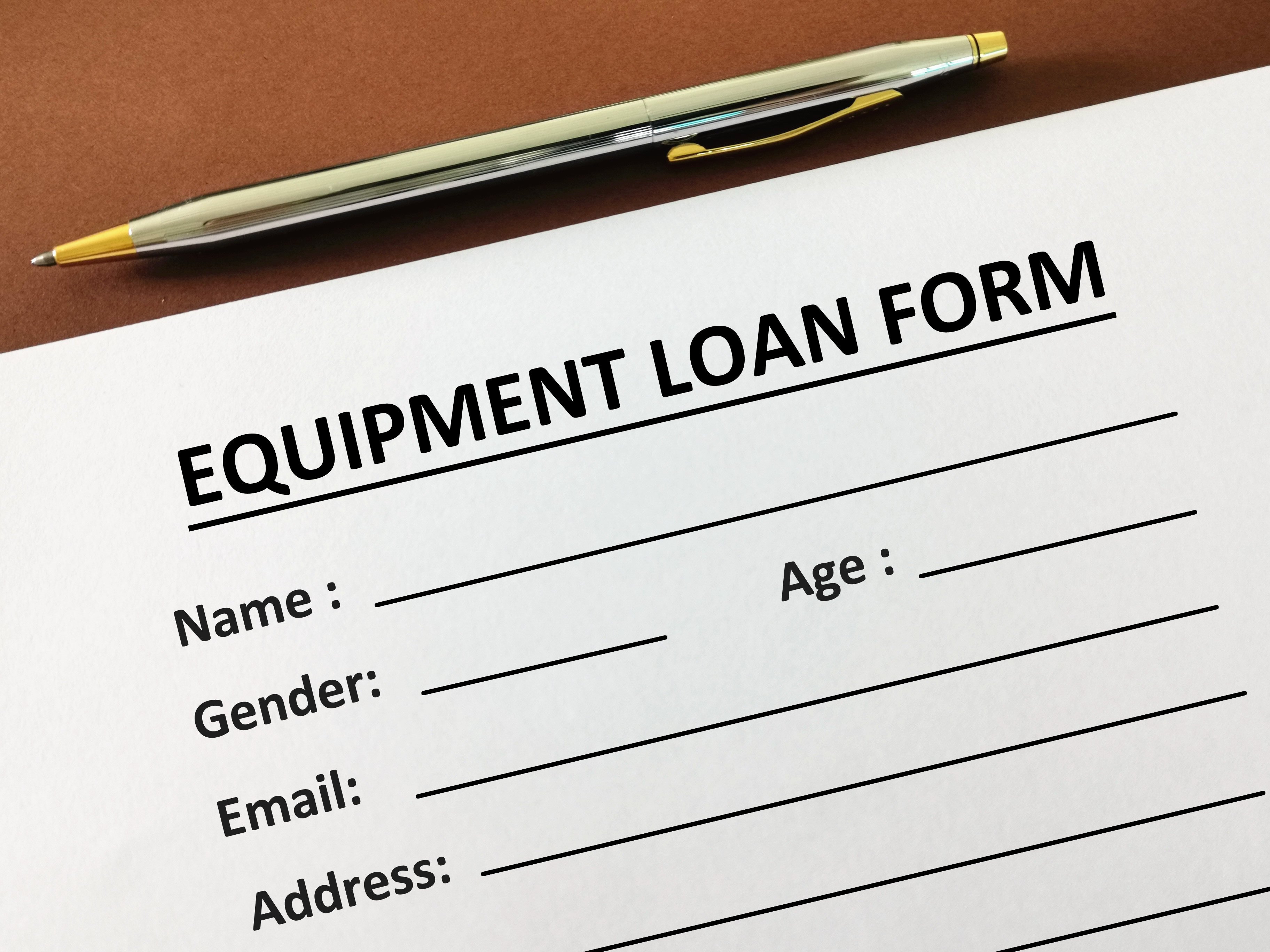Equipment financing explained
When your business needs to upgrade equipment, buy new tools, or replace an expensive part, where do you turn for financing?
While traditional options like business lines of credit, business credit cards, or dipping into cash reserves can work, equipment financing allows you to acquire what you need now without draining your resources. This type of financing is specifically designed for businesses looking to purchase or lease new or used equipment, with the flexibility to spread the cost over time—without tying up your capital.
Equipment financing can be a valuable partner for small business owners, enabling them to acquire essential equipment without impacting their day-to-day operations. This option not only covers the cost of large purchases but also keeps your working capital available for other needs. Unlike other financing options, equipment financing often allows businesses to purchase used equipment, which is particularly beneficial for companies on a tighter budget or those looking to make strategic investments in more affordable assets.
Additionally, because the equipment itself acts as collateral, it can make qualifying for financing easier compared to unsecured loans. Over time, the equipment will generate revenue or improve operational efficiency, making it easier to manage the cost of the financing while benefiting from the asset’s use in your business.
How business equipment financing is different from other business financing
With equipment loans and financing, those without excellent personal credit, or with start-ups and smaller businesses may still qualify (even if they can’t qualify for other types of business financing). This is because the equipment is collateral— if you default on the loan by missing payments, the lender may seize the equipment to recover their losses. So, it’s less of a risk for lenders.
Plus, as we already mentioned, financing equipment purchases leaves cash for other expenses— a big advantage for many businesses.
Another advantage is that there’s less paperwork for these loans when compared to other loans like start-up financing and SBA loans.
There will be some firm limits on the term of your equipment loan, since lenders don’t want to carry liability for equipment that’s obsolete or no longer valuable.
What are the requirements to qualify for an equipment loan?
The minimum requirements are generally: at least $100,000 in annual revenue, a credit score that’s 550 or above (this may include your personal credit score), and at least one year operating as a business. The application process requires proof that your business can manage the monthly payments. However, there will still be businesses that don’t meet these criteria. New businesses and smaller businesses are two examples. Or, they may need a loan amount that exceeds the lender's parameters.
Digital net terms, an alternative to equipment loans
There’s another option: B2B digital net terms. If you’re the buyer of equipment you can ask the supplier to look into using a platform like Resolve to offer you net terms as a deferred payment option. If you’re the supplier of equipment, you can utilize Resolve’s net terms and credit management solution to offer net terms to your business customers.
Here’s how it works. Resolve is a credit management solution that allows businesses to provide risk-free net terms to their customers, all while getting paid upfront. Resolve runs ‘quiet’ credit checks and approves your customer for advance payment of their net terms invoices. Businesses invoice customers the same way they’ve always been invoiced, Resolve makes a payment of up to 90% of the invoice within one day, and takes care of collecting the balance of the invoice.
This is especially helpful if your business sells machinery/equipment/high-value replacement parts. Some of your customers won’t be able to secure outside financing to purchase equipment. Using Resolve, you can confidently extend net terms using a solution that will help your customers grow their businesses and meet their equipment needs. Net terms of 30, 60, or 90 days can grow your sales and increase purchase volumes.
Resolve offers another advantage: speed of approval with payments of up to 90% of an invoice made within one business day. In contrast, when businesses approach their lender for an equipment loan, they’ll need to get approval for the specific equipment to be purchased. The financing company wants to ensure the equipment won’t lose its value quickly.
In some cases, a lender will request additional collateral before approving an equipment loan. This can be a business asset or a personal asset. The lender may also place a lien on the equipment. Defaulting on the loan will result in the equipment and assets being seized.
Equipment financing vs equipment leasing
Generally, equipment financing creates a higher initial strain on cash flow with a longer-term payoff, and equipment leasing creates less strain on cash flow/working capital with no long-term payoff. With financing (really a term loan), the equipment is owned by the business (and usually the business can use the depreciation in value over time as a tax deduction). With an equipment lease, the equipment is never owned outright. If you decide you want to purchase the equipment at the end of the lease, it often requires a large lump sum buyout.
It’s helpful to evaluate the equipment’s value over time. Is it something that will need replacing because the features aren’t durable? This can be the case with equipment that requires advanced technology to operate. When the technology is obsolete, so is the equipment. In this case, leasing may have the advantage. It’s a lot harder to replace equipment your business owns. When it’s leased, it’s just returned at the completion of the term.
Most loan terms for equipment financing run anywhere from a few months to ten years. A little research on the lifespan of specific equipment may help make the decision between financing and leasing.
One final aspect that may be a deterrent to equipment financing is the amount the lender requires as a down payment. If this is too high, your business may have to look at leasing to preserve cash flow. Or work with sellers willing to provide digital net terms so you can acquire the equipment you need without the extensive financing process of an equipment loan.
What do equipment finance lenders look for?
This really depends on your lender. Similar to other lenders, traditional banks will have more stringent eligibility requirements—but they may also offer competitive rates, and lower monthly payments. Every lender will want details on the exact equipment you need to buy. Be prepared with a formal quote from your supplier, as well as specs on the equipment.
Many lender's credit score requirements may include your personal credit rating if your business is newer, if you have a small business, or if your business doesn’t have a strong balance sheet.
At the beginning of 2021, we saw some lenders offering interest rates starting at 7.5%. Most lenders base the interest rate on your credit score, the total amount of the financing, and the term of the loan.
Lenders will also have a minimum amount of time your business has been operational before considering a loan application. This can be as low as 6 months, but is often a year or more.
Expect lenders to also request your full business plan, financial statements, your business history, annual revenue, and even your personal resumé. This is all used to determine your credit worthiness. Those with bad credit will struggle to get approval from most lenders (including credit unions).
Determining the ROI of your equipment
Obviously, if the cost of the loan/lease payment is higher than the savings the equipment generates, it won’t be worthwhile to acquire it. There are a few things to look at that will help determine the ROI of a piece of equipment before you make a purchase:
-
What are the financial benefits to the business immediately? How does this compare to the monthly payments? Will it free up working capital?
-
If you’re purchasing, what are the long-term benefits of the equipment? (Will it continue to make a positive financial contribution?)
-
Does the equipment eliminate/decrease the need for labor? If so, how much will it save?
-
What are the maintenance costs of the equipment? Insurance costs?
-
What’s the life expectancy of the equipment? Will it stop being effective before the loan repayment or lease term is up?
What types of businesses use equipment financing companies?
It might be a shorter answer if we look at what types of businesses don’t use equipment financing options! Even businesses with excellent cash flow choose to finance equipment in order to keep a healthy balance sheet and retain reserves for unexpected expenses.
Certainly, anyone who uses industrial equipment will look for financing, both for full equipment purchases and for purchasing replacement parts. Production line machinery, forklifts, excavators, threshers, and tractors are just a few items that are frequently financed. Construction equipment is a popular category for financing.
Restaurants are often faced with large and urgent equipment purchases necessary for daily functions. And any business that has very high energy usage may see significant savings by switching to energy-efficient equipment. We saw one manufacturer save over $150,000 just by switching from propane forklifts to electric ones.
Medical and dental offices, healthcare organizations, call centers, offices, and gyms are also typical borrowers who will use equipment financing to keep up with their needs and upgrade as new technology comes on the market. Almost any type of equipment can create the need for equipment financing.
Alternatives to equipment financing/Equipment leasing
We already looked at digital net terms as an attractive alternative to equipment financing. Other loan options include invoice factoring, inventory financing, SBA loans (small business loans), personal loans, commercial real estate loans, online lenders, business lines of credit, and business credit cards.
Invoice factoring is used when a business needs the cash from outstanding accounts receivable, and uses a third party to take over the collection of the invoice while paying out a set portion of the account receivable.
Inventory financing can be used to purchase products that will later be sold. This can free up cash flow, and the inventory is like collateral for the loan.
SBA loans from the U.S. Small Business Administration are processed through banks and approved lenders and can be used to purchase equipment in some cases.
Commercial real estate loans are used when a business buys or renovates a property. Additional funds may be included in the loan to cover the cost of new equipment.
Business lines of credit are best for short-term financing, as you pay interest on the amount owing. Once your business is approved for a line of credit, you’ll always have access to any unused funds for any business needs, including purchasing equipment.
Although it can be risky to use a business credit card to purchase equipment because of the much higher interest rates, there are times when it can work in a business’s favor. If the card has an attractive interest rate (such as an introductory rate), or a good rewards program, and your business can manage to pay the balance promptly, there are some advantages.
With some research and evaluation of pros and cons, you can find the best equipment financing for your needs, and enjoy the advantages that new/upgraded/repaired equipment brings to your business.







